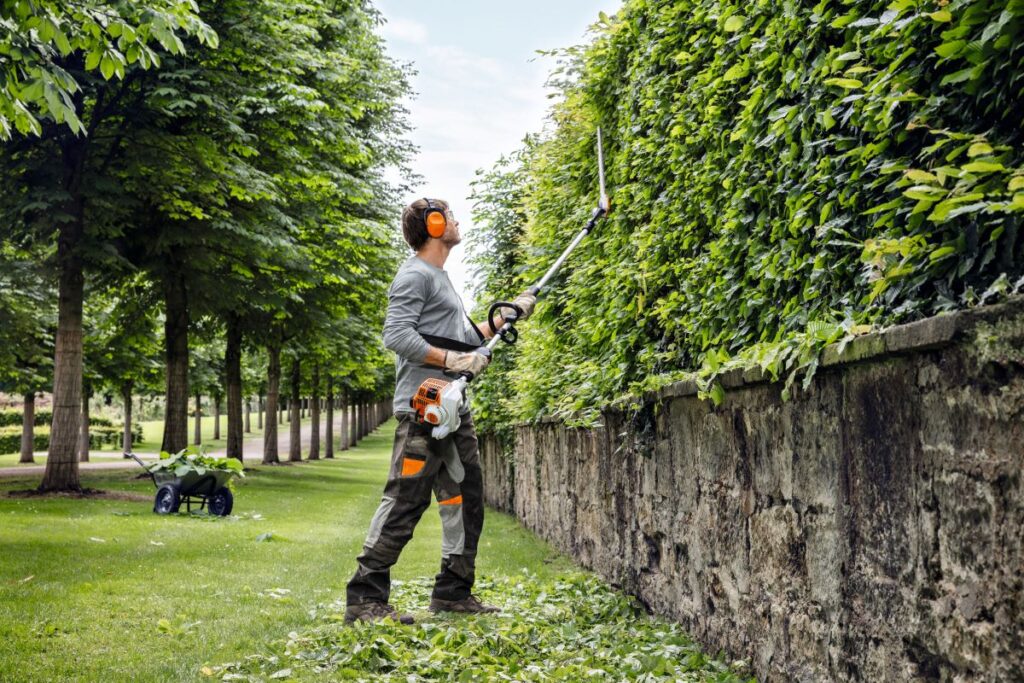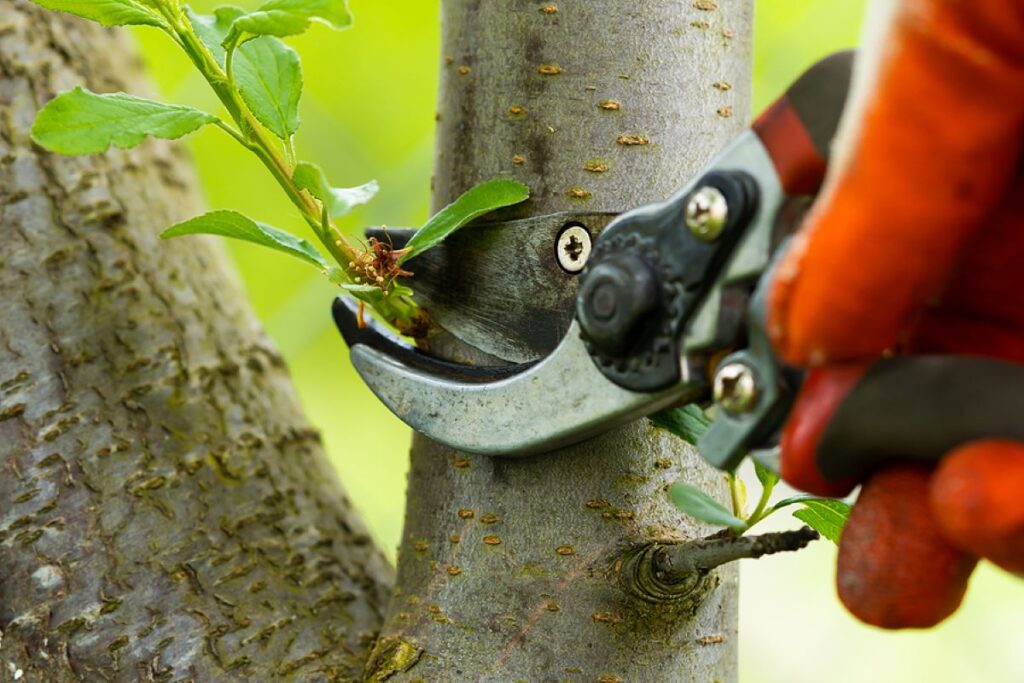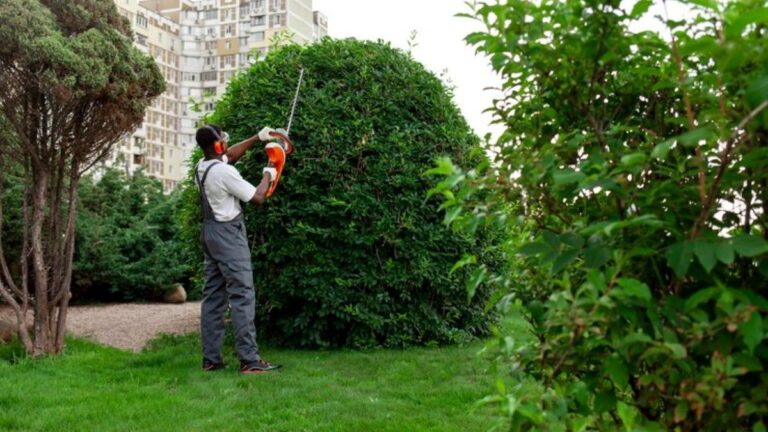Hedges are a popular feature in many residential landscapes, serving both functional and aesthetic purposes. Regular maintenance of these green borders can significantly enhance the overall look and health of your garden. In this comprehensive guide, we will explore the various benefits of regular hedge maintenance, providing homeowners with valuable insights and tips for optimal care.
Understanding Hedge Maintenance
What is Hedge Maintenance?
Hedge maintenance refers to the practices involved in keeping hedges healthy, well-shaped, and free from pests. This includes activities like trimming, pruning, watering, and fertilizing. A well-maintained hedge not only looks appealing but also contributes to the longevity of the plants. Regular attention to hedges can also enhance the overall aesthetics of a garden, providing structure and definition to the landscape.
Regular hedge maintenance can vary depending on the species of the hedge, the season, and the desired shape and size. Proper techniques help in encouraging new growth while preventing diseases and pest infestations. Homeowners should familiarize themselves with the specific needs of their hedges to ensure they thrive. For instance, some hedges may require more frequent pruning during their active growth periods, while others may benefit from less intervention, allowing them to establish a more natural form. Understanding these nuances can lead to more successful hedge management.
Importance of Regular Hedge Care
Regular hedge care is vital for several reasons. Firstly, neglected hedges can become overgrown, hindering their purpose as decorative elements. Overgrowth may lead to increased risk of diseases, as crowded plants are more susceptible to fungal infections and pests. Furthermore, an unkempt hedge can obstruct views and pathways, creating safety hazards and detracting from the overall beauty of the garden.
Moreover, maintaining your hedges fosters a healthy garden ecosystem. Hedges can provide habitat for numerous wildlife species, such as birds and beneficial insects. Therefore, keeping them well-tended supports biodiversity and promotes a balanced environment in your garden. Additionally, well-maintained hedges can act as natural windbreaks and privacy screens, enhancing the comfort of outdoor spaces. They can also contribute to soil health by preventing erosion and providing a habitat for beneficial microorganisms. As such, the role of hedges extends beyond mere decoration; they are integral to the ecological health of your garden.
The Aesthetic Advantages of Hedge Maintenance
Enhancing Curb Appeal
One of the most immediate benefits of regular hedge maintenance is the enhancement of curb appeal. A neatly trimmed hedge creates an inviting entrance and boosts the overall attractiveness of your property. It signals to visitors and passersby that the home is well cared for.
In fact, hedges can act as natural privacy screens, framing your home while simultaneously adding beauty. Homeowners often find that a well-maintained hedge is an asset when it comes to selling their property, as it improves first impressions. The lush greenery of a well-kept hedge can soften the hard lines of architecture, creating a harmonious balance between nature and structure. Furthermore, seasonal changes in foliage can add layers of interest, with vibrant colors in spring and summer, and warm, earthy tones in fall, enhancing the visual appeal throughout the year.
Creating a Structured Garden Landscape
Hedges can help anchor a garden layout, defining spaces and providing structure. By keeping hedges properly maintained, you can establish clear boundaries between different garden areas, such as flower beds, vegetable patches, and pathways. This organization creates a visually appealing and functional landscape.
Additionally, well-shaped hedges can serve as backdrops for other plants, allowing colorful flowers and foliage to stand out. They can also guide the eye through the garden, creating an illusion of depth and richness in the space. The strategic placement of hedges can also influence light and shadow in the garden, creating microclimates that can benefit certain plants. For instance, taller hedges can provide shade for delicate flowers that thrive in cooler conditions, while lower hedges can allow sunlight to reach sun-loving plants. This thoughtful arrangement not only enhances the aesthetic value but also promotes a healthier garden ecosystem, demonstrating the multifunctional role of hedges in landscape design.
Environmental Benefits of Regular Hedge Maintenance
Promoting Biodiversity
Regular maintenance of hedges has a significant impact on local biodiversity. Healthy hedges can support various forms of wildlife, including birds, insects, and small mammals. By providing habitats and food sources, well-tended hedges form an essential part of a balanced ecosystem.
Moreover, diverse plant species within hedges can encourage the presence of beneficial insects, such as pollinators, which are crucial to the overall health of gardens and agriculture. This biodiversity not only benefits the landscape but also strengthens the ecological resilience of the area. For instance, hedges can serve as corridors for wildlife, allowing animals to safely navigate between different habitats, which is particularly important in fragmented landscapes. The presence of various flowering plants within hedges can also attract a range of pollinators, including bees, butterflies, and even hummingbirds, all of which play vital roles in the pollination of crops and wild plants alike.
Improving Air Quality
Hedges contribute to improved air quality in urban and suburban areas. They act as natural air filters, absorbing pollutants and carbon dioxide, while releasing oxygen. Regular maintenance ensures that hedges remain healthy and efficient in performing this function.
Additionally, a well-maintained hedge offers the advantage of reducing noise pollution. Dense hedges can help muffle sounds from traffic and other disturbances, creating a more tranquil living environment. The strategic placement of hedges can also enhance their effectiveness; for example, positioning them along busy roads can significantly lower noise levels in adjacent residential areas. Furthermore, the cooling effect of hedges can help mitigate the urban heat island effect, where cities become significantly warmer than their rural surroundings, thus improving the overall comfort and livability of urban spaces. The combination of cleaner air and reduced noise creates a more pleasant atmosphere for residents, promoting mental well-being and encouraging outdoor activities.

Practical Benefits of Hedge Maintenance
Increasing Property Value
In addition to aesthetic and environmental advantages, regular hedge maintenance can directly affect property value. A well-maintained landscape is often an attractive feature for potential buyers, indicating that the property has been cared for and is worth a higher price.
Investing time and resources in hedge care can yield significant returns when it comes to selling a home. Properties with thoughtfully designed and maintained landscapes tend to sell faster and at higher prices compared to those with overgrown or neglected gardens. Furthermore, the presence of healthy hedges can enhance curb appeal, making a strong first impression that can sway buyers’ opinions even before they step inside the house. This initial attraction can be pivotal in a competitive real estate market, where every detail counts in influencing a buyer’s decision.
Providing Privacy and Security
Hedges serve as effective privacy screens, creating a barrier between your home and the outside world. Regular maintenance keeps these barriers neat and healthy, reinforcing their effectiveness in providing seclusion. The strategic placement of hedges can also help to block out noise from busy streets or neighboring properties, creating a tranquil outdoor space that feels like a personal retreat.
Moreover, hedges can also contribute to security. A dense, well-maintained hedge can deter intruders by blocking visibility and creating a physical barrier that is harder to penetrate. Homeowners can enhance their peace of mind with a thoughtful approach to hedge maintenance. Additionally, certain types of hedges can be chosen for their thorny characteristics, which can serve as an extra deterrent to unwanted visitors. This combination of privacy and security not only protects your home but also fosters a sense of comfort and safety for you and your family, allowing you to enjoy your outdoor spaces without worry.
Tips for Effective Hedge Maintenance
Best Time for Hedge Trimming
The best time for hedge trimming often depends on the species and its growth cycle. Generally, late winter or early spring before new growth begins is ideal for most hedges. This timing allows for shaping without hindering new shoots and growth. For instance, deciduous hedges, which lose their leaves in the fall, are particularly responsive to early spring trimming, as this encourages robust new growth in the warmer months.
In some cases, you may also need to do a summer trim to maintain shape or manage excessive growth. It’s essential to monitor your hedges’ growth patterns and adjust your maintenance schedule accordingly for optimal health and appearance. Additionally, be mindful of the flowering cycles of your hedges; trimming too late can remove buds and reduce blooms, particularly for flowering varieties that set their buds in the summer for the following year’s display.

Essential Tools for Hedge Care
Having the right tools is crucial for effective hedge maintenance. Here are some essential tools you should consider:
- Hedge Shears: Ideal for shaping and trimming.
- Pruning Saws: Useful for cutting thicker branches.
- Loppers: Great for reaching high branches.
- Gloves: Protect your hands while working.
- Rake: Useful for cleaning up debris after trimming.
Investing in quality tools can make the maintenance process efficient, safe, and effective. Always ensure your tools are clean, sharp, and properly maintained for the best results. Additionally, consider using electric or battery-operated hedge trimmers for larger hedges, as they can significantly reduce the time and effort required for extensive trimming tasks. These tools can help you achieve a more uniform cut and reduce fatigue during longer maintenance sessions.
Moreover, don’t overlook the importance of safety gear, such as goggles and ear protection, especially when using power tools. Proper safety precautions not only protect you from potential injuries but also ensure a more enjoyable and productive gardening experience. Keeping your workspace organized and free of debris can further enhance safety and efficiency, allowing you to focus on creating the perfect shape for your hedges.
More to Read : Residential Hedge Trimming: Tips for a Tidy and Well-Maintained Garden
